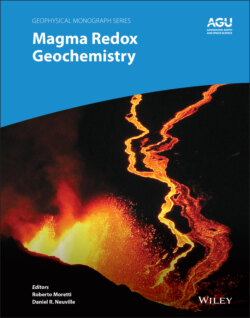Читать книгу Magma Redox Geochemistry - Группа авторов - Страница 42
3.2. SAMPLE SELECTION, METHODOLOGY, AND DESIGN OF THIS STUDY
ОглавлениеWe can envision many valid approaches for compiling fO2 determinations from the literature. In this contribution, we focus on the oxybarometric approach and apply oxybarometers that have all been cross‐calibrated at 1 atmosphere under controlled atmosphere conditions at known fO2. We compile published compositions from Earth’s ridges, back arcs, forearcs, arcs, and plumes and recalculate the fO2 values recorded by these volcanics (lavas and tephras) and mantle lithologies (mostly peridotites). We have opted to include samples wherein the original publications provide sufficient information to recalculate fO2 (e.g., microprobe analyses) such that we may apply a single set of activity models and methodologies to all of the compositional data collected in disparate studies. This is essential, because the fO2 calculated from a given composition may vary by up to a log unit depending on the activity model employed (e.g., Birner et al., 2017; Herd, 2008; Wood, 1990). Further, many publications do not report the formulation of the reference buffer (for example, QFM from O’Neill [1987] vs Frost [1991] vs Myers & Eugster [1983]), such that reported fO2s may not be comparable.
We describe our methods, including chosen activity models, in detail in our methods appendix. In brief, we include widely applied oxybarometric techniques that have documented intra‐technique consistency, and which require minimal metadata: magnetite‐ilmenite pairs, spinel‐oxybarometry, and glass spectroscopy. For example, Davis and Cottrell (2018) show that both the spinel oxybarometric method of Wood and Virgo (1989) and the Fe3+/Fe2+ activity model of Kress and Carmichael (1991) return the experimentally imposed fO2 of gas‐mixing experiments containing spinel, olivine, and orthopyroxene in basaltic andesite liquid. Likewise, Fe3+/∑Fe ratios of glasses converted to fO2 via the Kress and Carmichael (1991) algorithm are consistent with magnetite‐ilmenite oxybarometry using the activity model of Ghiorso and Evans (2008) (Crabtree & Lange, 2011; Waters & Lange, 2016). Table 3.1 summarizes the oxybarometric methods we apply and the studies we include. A more detailed discussion of alternative parameterizations for fO2 can be found in the methods appendix. The compiled dataset can be downloaded as a data library (Cottrell et al., 2021). The dataset is unique in that we aggregate fO2 data from different studies, different authors, and with different proxies, but we reprocess and quality check the data to facilitate global comparisons. This exercise also identifies which regions and tectonic settings lack direct fO2 constraints (Figure 3.1).
We first present the Fe‐proxy‐based fO2s recorded by rocks from each tectonic setting (ridge, back arc, arc, and plume). We discuss the processes that may perturb these proxies and the extent to which the fO2 recorded by rock samples is representative of the mantle source. We then compare Fe‐based proxies to the inferences that can be drawn from magmatic V concentrations across tectonic settings. Like all elements, the V concentrations of basaltic liquids change as fractional crystallization proceeds, necessitating the normalization of V concentration to another trace element. Although many studies normalize V concentrations to Scandium (Sc), Mallmann and O’Neill (2009) and Laubier et al. (2014) critically evaluate candidate trivalent cations and conclude that the V/Sc ratio does not remain constant as fractionation proceeds. V/Sc begins to rise as MgO falls below 8 wt.%, making this ratio unsuitable to evaluate primitive arc basalts (Laubier et al., 2014). Following Laubier et al. (2014) we choose Yb for normalization because it remains constant during crystallization of typical basalts down to < 6 wt.% MgO. We use the compilation of Gale et al. (2013a) for MORB and BABB chemistry, which ensures that samples derive from on‐axis locations and that trace element analyses are of high quality. We use the compilation of Turner and Langmuir (2015) for arc basalt chemistry, which ensures that samples derive from arc‐front volcanoes and, again, that trace element analyses are of high quality. Following Laubier et al. (2014), we filter these compilations for 6 wt.% < MgO < 12 wt.% to ensure that we are evaluating compositions that represent liquids (not cumulates) and that magnetite has not yet begun to crystallize (V is compatible in magnetite). We only evaluate compositions with Dy/Yb < 2 to avoid residual garnet in the source (Laubier et al., 2014). With these filters in place, we compile trace element data for 1294 MORB and 225 BABB, as well as 317 basalts from 37 arc‐front volcanoes. We did not include plume‐derived basalts in this comparison because the residual garnet in plume sources complicates interpretation of V/Yb. Yb (and Sc) are highly compatible in garnet, and the relationship between V/Yb (or V/Sc) and fO2 is poorly defined (Canil, 2002; Davis et al., 2013; Lee et al., 2005).
